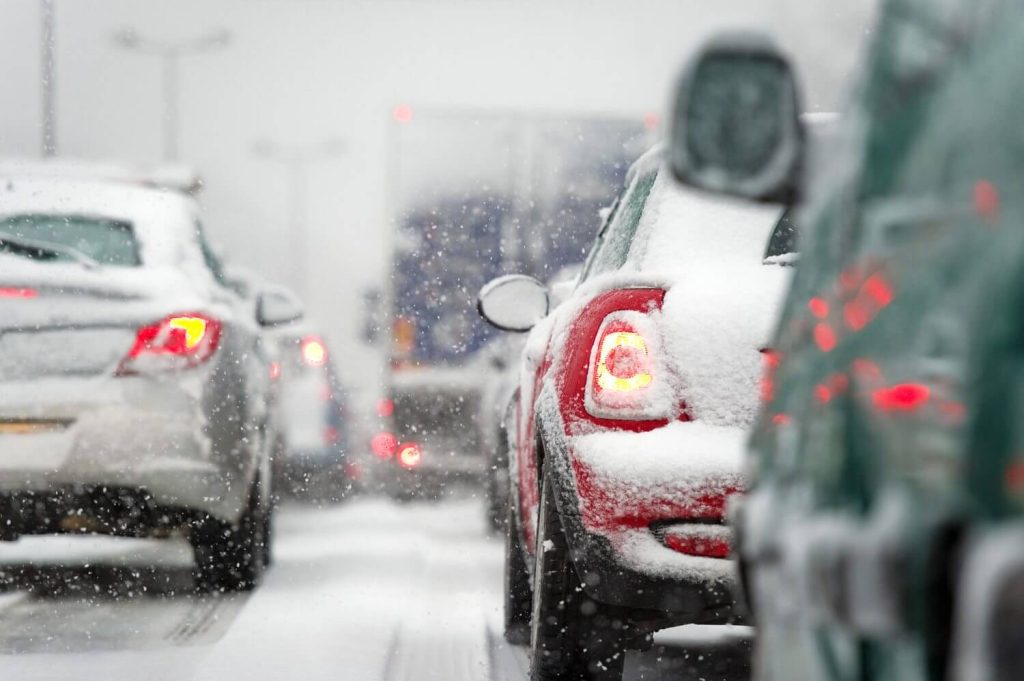It’s been quite a winter so far here in Toronto and the GTA. While driving conditions have been less than ideal, if there’s any good news, it is that traffic seems to be somewhat lighter than usual because it’s been too cold to go out.
Mild or freezing, every winter poses a number of challenges for all drivers. Unfortunately, those challenges often result in a collision. If you’re very lucky, that collision won’t involve any personal injury.
While winter conditions can be the cause of car accidents for a number of reasons, including losing control on an icy corner or striking a snow bank in the road, the longer braking distances on slippery roads, versus summer conditions, is a major culprit.
WHY BRAKING DISTANCE IS SO IMPORTANT
Few of us consciously consider braking distances while we’re driving, but they are incredibly important to avoiding a collision.
When you’re driving at 100 km/hr, you travel about 100 metres (the length of a football field) every 4 seconds, or about 25 metres per second. Driver reaction times can vary, but it’s generally regarded that 0.7 seconds is as fast as most drivers react when they need to brake. 2.3 seconds is considered average. That’s a 40 metre difference in the braking distance between the fastest reaction time and the average. But even a 1 metre difference can be the difference between stopping in time or striking the car in front of you.
These numbers only consider driver reaction time. Of course, the speed of your vehicle affects braking distance too, but it probably affects it more than you think. Braking distance increases exponentially as your speed increases. That means if you double your speed from 50 km/h to 100 km/h, you will quadruple your stopping distance; from 10 metres to 40 metres.
HOW WINTER CONDITIONS AFFECT BRAKING DISTANCE
There are a many factors that affect your braking distance even beyond speed and driver reaction time. The condition of your brakes, driving distractions and the quality, wear and inflation pressure of your tires can all contribute to how long it takes your car to come to a full stop, at any time of the year.
But some factors are that are particularly worse in winter.
1. ROAD CONDITIONS
Of course, if you’re driving on snow and ice, your braking distances will be considerably longer than on dry roads. But slippery surfaces are not the only reason why you need to be more cautious when driving in winter. On almost any winter drive, especially in urban centres, you can experience many different conditions, from dry, to slush, snow and ice, all in the same trip. That means you must remain constantly aware that conditions might change at any moment. And when snow gets compacted into the treads of your tires, it can increase your regular stopping distances up to 10 times.
2. HOW WELL YOU SEE THE ROAD
Whether you’re driving during a heavy snowfall, or you’re in a spray of slush from the vehicles in front of you, it can affect how easily you see the road. The more difficult it is to see out of your windshield, the longer it can take for your brain to register the need to brake and the longer it will take for the car to stop. Make sure your windshield wipers are in good condition; try to keep them free of ice and keep your washer fluid topped up throughout the winter.
3. DISTRACTIONS
Everything that takes away from your full concentration on your driving is a distraction and can increase your stopping distances. In addition to obvious distractions, like using a cell phone or reaching for something while driving, winter driving carries its own distractions, like trying to keep your windshield clear, inside the car and out.
If there is one tactic you should use to minimize your stopping distances in winter, it is to reduce your speed. No matter what your reaction times are or what other conditions work to lengthen your braking distances, a lower speed will improve them. And they will keep you and your family safe, and your car out of the body shop!

